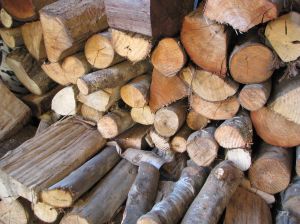
GILGIT:
At 8.30 in the morning on Thursday, Masroor Wali makes a beeline to a firewood vendor with hopes of stockpiling firewood, his family’s only line of defence against the biting cold of Gilgit. This is the third consecutive day Wali has gone in search for wood before he goes to work for the government. But he returns empty-handed as there is no firewood left in the market.
Firewood is what winter in Gilgit-Baltistan (G-B) is all about. Temperatures drop ruthlessly by more than 12 degrees in December and January, and residents have nought if they don’t have something to burn to counter the bone-chilling cold which lasts till late March.

“It’s a tragedy that we have no firewood still,” complains Wali who lives in the capital of G-B, Gilgit. The temperature dropped to zero degrees after rain poured down on G-B this week. Without direct gas lines in the region, heating remains a perennial issue.
“It’s just too cold in the morning when we wake up. My school-going kids just cannot handle the extreme weather,” adds the father of three.
Indoor solutions
Nothing beats the heat generated by firewood, says Wali. “A wood fire is the only way to keep a room bearable; kerosene oil or LPG heaters just do not work as well.”

Then firewood is also cheaper. When a winter is so long, cost-effectiveness has to play a role.
Even though the need emerges as early as late October, vendors do not start selling timber before December.
Qari Khan, a vendor, claims suppliers are responsible for the delay. “The valleys where the wood is procured and then transported from are remote,” says Khan. “But then again, this [the delay] may be a tactic to raise the price.”

Cost of fending off frostbite
According to Wali, starting mid-November, he requires one maund or 40 kilogrammes of timber to keep the fire going throughout the day. This means running up a daily bill of Rs600 just to buy wood. For many, keeping the fire going is tantamount to burning money.
Where did the power go
In an uncanny, miserable chain of events, as winter peaks, so do power outages. Power production falls and consumption peaks as more people spend time indoors, avoiding Jack Frost.
As per previous years’ data and accounts, Gilgit’s residents deal with 20-hour-long outages every day. With no running gas, and power cuts, timber remains their only source of heat.
“About 99% of the local population uses firewood as the main source of domestic energy,” says a study conducted by World Wide Fund [WWF] in 2013. “On average, a household of five to eight members consumes about 5-7 tons of firewood during the six-month-long winter.”
Published in The Express Tribune, November 7th, 2014.
COMMENTS (2)
Comments are moderated and generally will be posted if they are on-topic and not abusive.
For more information, please see our Comments FAQ














































Well written and thanks for raising an important public matter in such a beautiful way. Well said: The war against the freezing cold temperature (winter in GB) in Gilgit Baltistan is really a hard time for the residents of Gilgit Batistan where the temperatur falls to 20 Degree celsius in winters. The cutting of trees to full fill the energy requirements has become a reason of deforestration in the area where the soil is already dead for sevrel months of the year. In such circumstances the local and federal governemnt is responsible to full fill the energy needs of the region by providing alternative sources of energy at lower pricess. The whole province has yet not got a single pipeline of natural gas nor the government has took much concedration to uplift the hydral power stations of the area, which could be a cheaper source of energy for the residents region.
Dear Mr, Mir excellent article. Very few people think unthinkable like you.